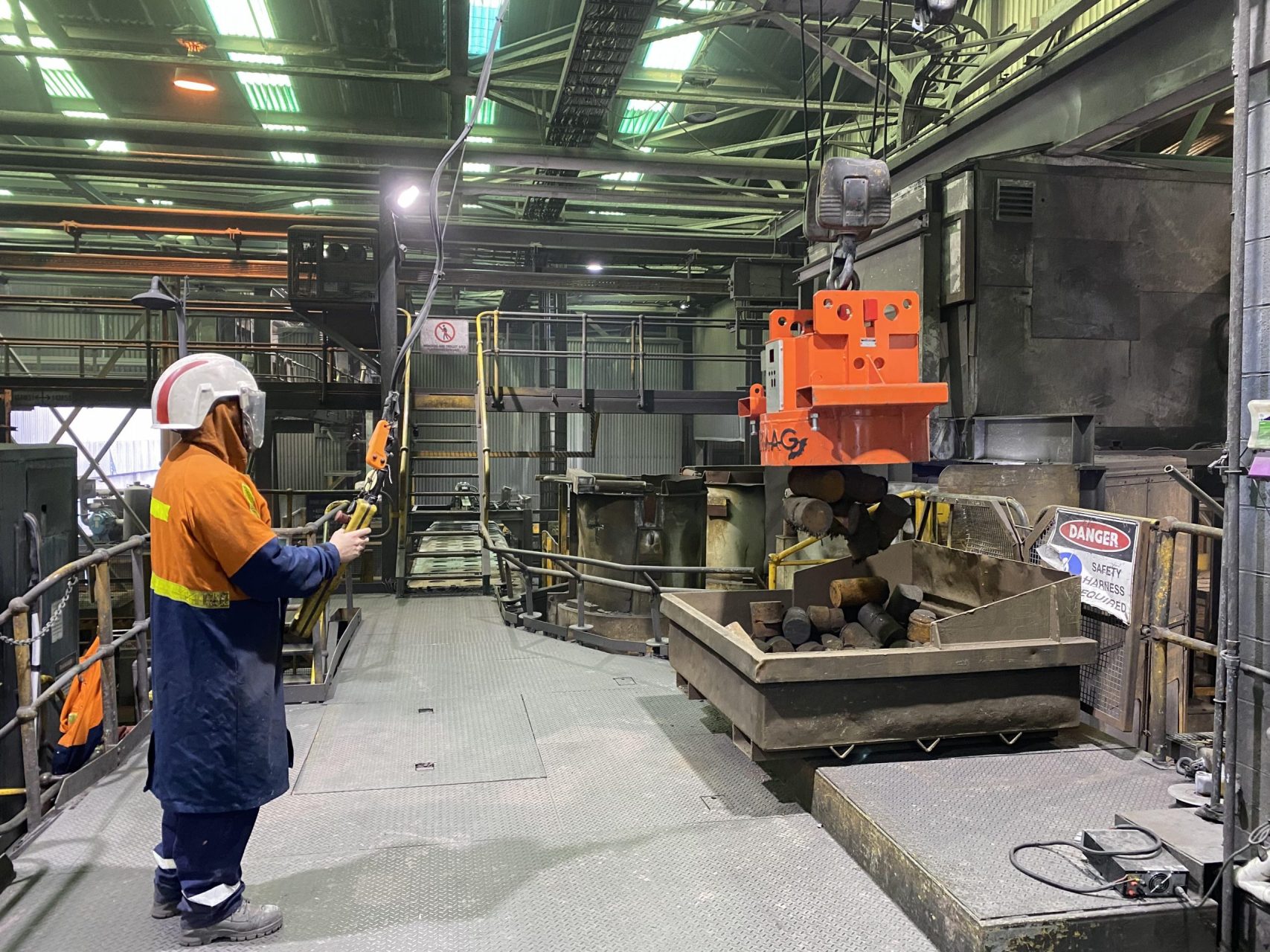Cast iron is one of the vital components that helps keep Tomago’s rod shop ticking-over, allowing baked anodes to be joined securely to the rodding assemblies before thay are sent to the liquid metal department for use in pots.
Forty-kilogram steel pins measuring some 300mm in length and 160mm in diameter are used in the process and, despite their size, are not indestructible. Over time they are damaged by the molten cast iron, electricity passing through them in the pots and the cryolite bath mixture to which they are exposed when the anode assemblies are in the pots.
Damaged pins need to be replaced and reprocessed and it is at this point, says Rod Shop Process Engineer Marshal Holden, that problems arise.
“The issue was that we didn’t have a reliable method of getting the pins back into the furnaces,” Marshal said.
The damaged pins needed to be reprocessed to both maintain the correct cast iron quality and have a sufficient reserve stock of 1T cast iron blocks, known as ‘pigs’. The reserve stock is critical to the Rod Shop to allow rodding of anodes to continue if there is significant downtime, preventing the availability of recycled thimble material normally used in the furnaces.
“Our issue with not being able to pour ‘pigs’ means we have no back-up on the shot blaster and thimble processing equipment,” Marshal said.
“If there is a breakdown and we have no pigs, we can’t pour anodes. The new magnet has allowed us to consistently build a good inventory of pigs to eliminate that risk,” he added.
“The current process at the time was to load them into a shot blaster along with the recycled thimble material to clean them, then send them along a conveyor where a drum magnet loads them into charge bins, which were eventually emptied into the furnaces.
“Over the years, as the pins became larger through process improvements, the drum magnet became unreliable in lifting the pins – it simply wasn’t powerful enough.

“We tried a lifting jig and manual handling but there were pinch points and time issues. We couldn’t use a bigger magnet because we couldn’t fit one in – you can only work with the space you’ve got.”
But that did not mean a different style of magnet could not be used and early this year the Rod Shop team heard, through the Asset Management team, of a compact (800mm wide by 600mm high) remote-control, battery-powered electro-magnet that had arrived on-site for contractor Regain.
“We asked if we could trial it and they said ‘yes’. We took some pins to Regain and trialled it in their workshops. When we saw it was successful we moved it over into the Rod Shop for on-site trials.”
Effectively, that testing procedure meant successfully repeating an exercise loading pins from a bin on the furnace deck into the charge bins, ready for use.
With the testing satisfactorily completed the new magnet went into service and has been in use now for several weeks. It is, according to furnace operators, the most user-friendly solution so far.
“The team is happy. The new magnet is more reliable, it saves time and there are significant savings in maintenance costs,” he said.
In fact, the remotely-controlled magnet is so successful that a second one was ordered and went into service in April.

